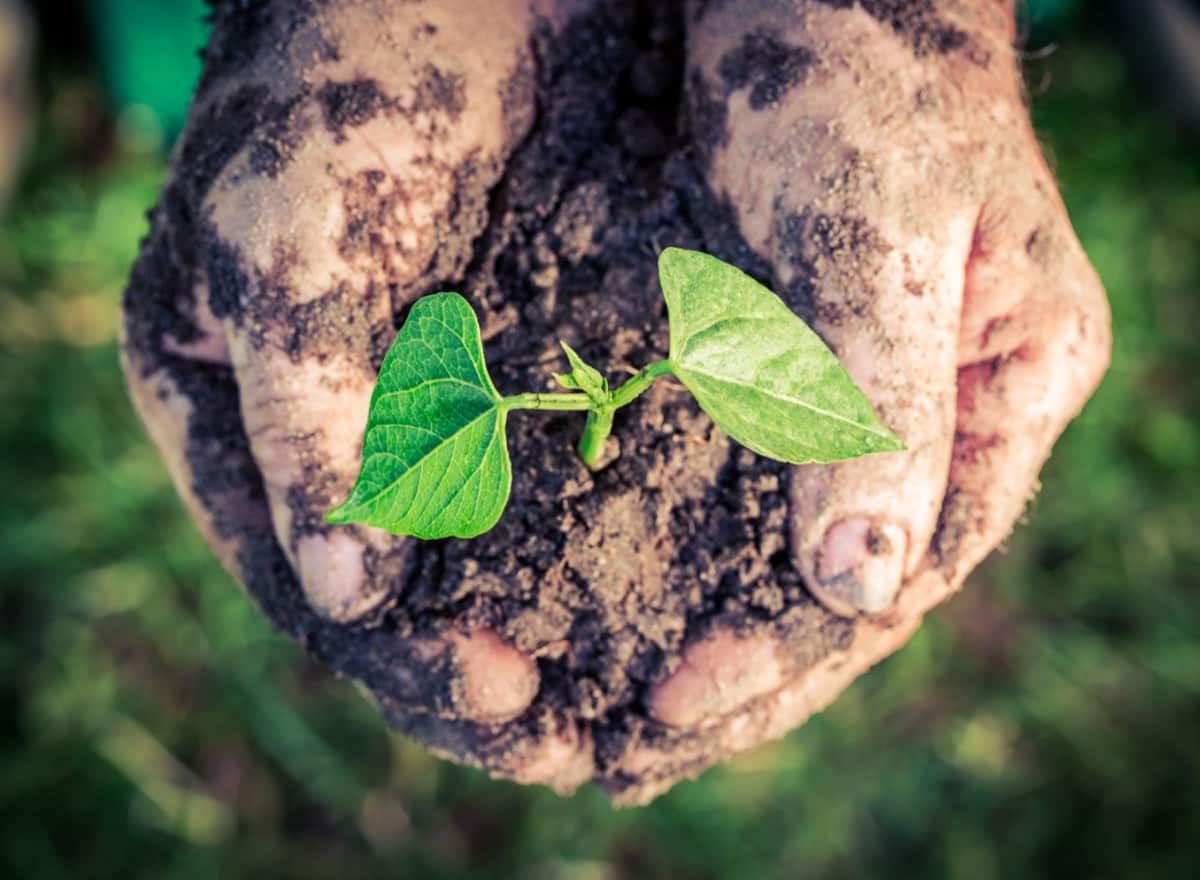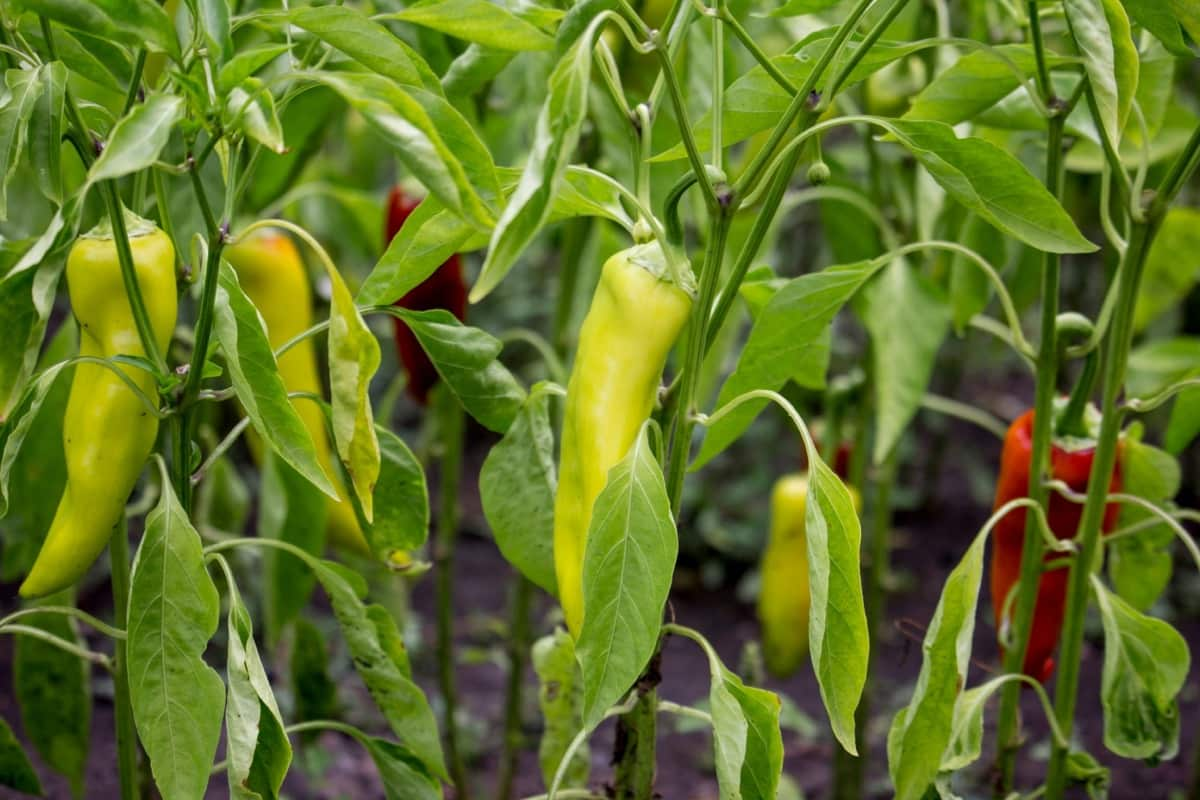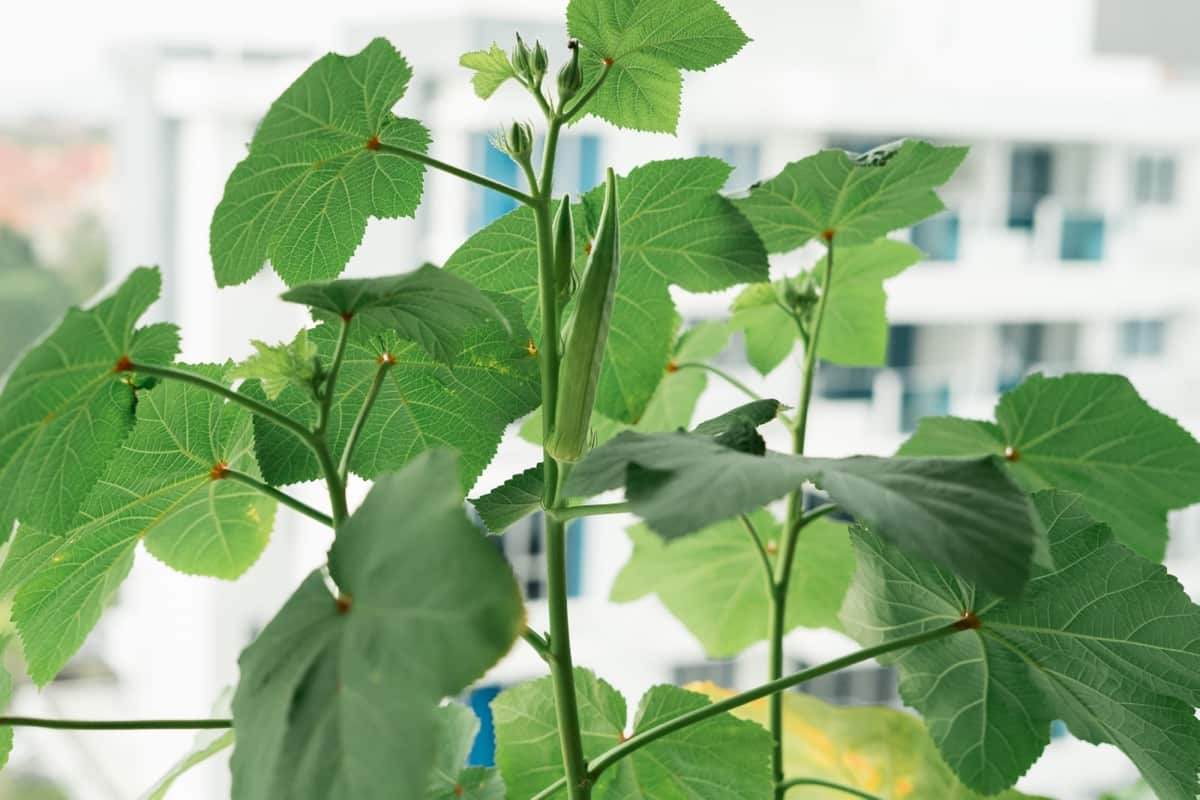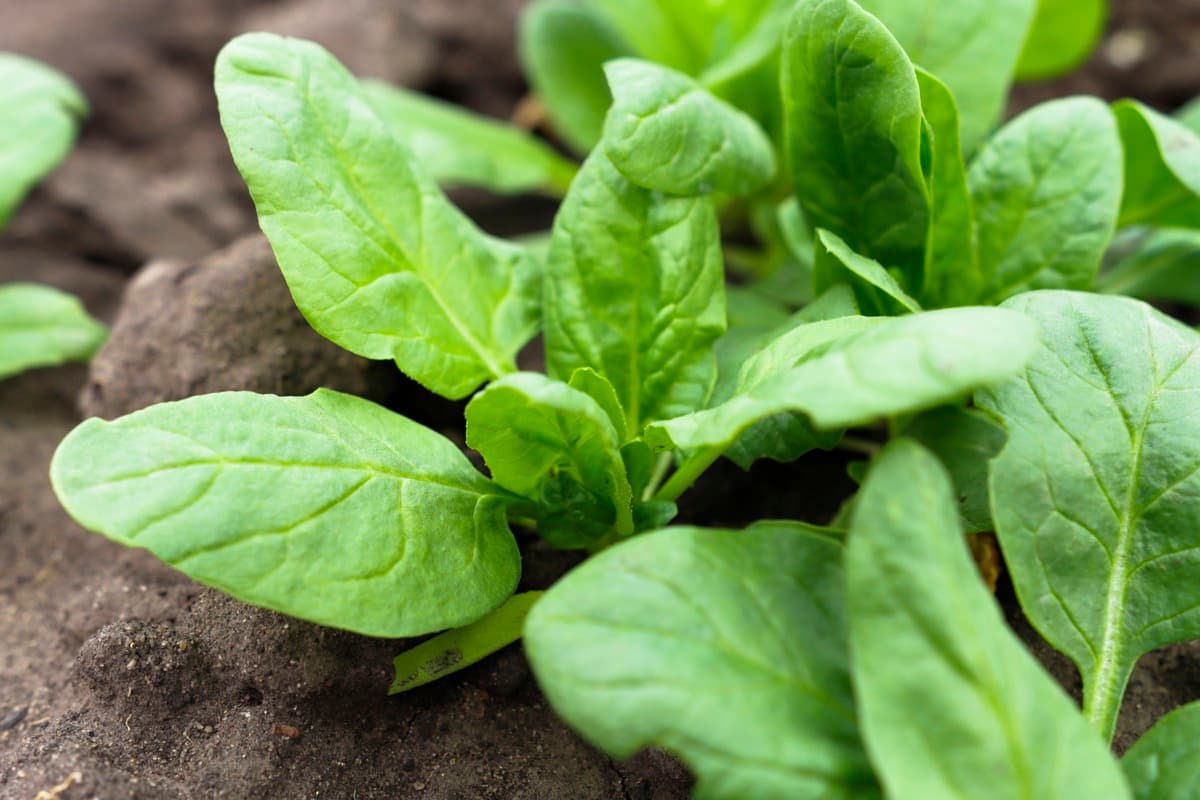Many vegetables can be grown in a bucket, depending on the soil type and water available. Each vegetable has specific growing requirements and will likely require a different variety or combination of seeds or plants to produce a successful harvest.

Bucket gardens are a great way to grow lots of different types of vegetables without taking up too much space. And unlike traditional gardening methods, bucket gardens are easy to maintain and can be used indoors or outdoors. So, whether you want to save space or try something new, growing vegetables in buckets is a great option.
18 best vegetables to grow in buckets
Beans
Beans are low-maintenance vegetables and do best when planted in well-drained, loose soil. Beans also benefit from being planted near other vegetables to share nutrients and water. When planting Beans, space them at least 2 feet apart and fertilize them often with a balanced fertilizer before planting. When the Beans are mature, they will be long and slender. Once your Beans have grown roots, you can begin harvesting them by picking the mature pods off the plant.
In case you missed it: Growing Green Beans from Seed to Harvest: How to Start from Scratch, A Detailed Guide for Beginners

Broccoli
Broccoli is a cruciferous vegetable that can be grown in bucket or container gardens. It can be planted early in the season for harvest in late summer or fall. Broccoli is a hardy vegetable that tolerates drought and cold weather well, making it good for growing in areas with colder climates. Broccoli plants grow slowly and are good candidates for small garden spaces.
Garlic
Garlic is one of the most widely used vegetables in the world. It is great for adding flavor to dishes but also has health benefits. You can grow Garlic by planting cloves directly into the ground or growing bulbs in jars.
Garlic requires little maintenance and will happily grow in a sunny spot with well-drained soil. Start by planting Garlic cloves in late winter or early spring, and keep them watered but not overly wet. Once the bulbs have formed, you should harvest them by cutting off the top of the bulb and pulling out the cloves.
Carrots
Carrots are the best vegetable to grow in buckets because they are prolific growers and don’t require much attention. They do best in soil rich in organic matter, but they will also grow in average soil. Be sure to provide plenty of water when growing Carrots and fertilizer if needed. Carrots are the best vegetable to grow in buckets because they’re fast-growing and easy to care for. Ensure you have enough water and nutrients, and they’ll be happy.
In case you missed it: How to Grow Carrot from Seed to Harvest: Check How this Guide Helps Beginners

Ginger
Ginger is a versatile vegetable that can be grown in buckets. If you are new to gardening, Ginger is a good beginner vegetable to grow. It requires little maintenance and produces delicious fruit. Plant the Ginger in a bucket or container of soil and water it well. Keep the Ginger moist but not wet; if it gets too wet, let it dry for a few minutes before watering again.
Once the Ginger has germinated, remove the young leaves and cover the roots with mulch or leaves to protect them from frost. You can harvest Ginger anytime between late fall and early spring by cutting off the stem below ground level. The fruit will be covered in a protective skin, which you can gently peel away until you reach the soft flesh inside.
Onion
Onions are a great vegetable to grow in buckets. They are easy to grow and don’t require a lot of maintenance. You can start growing Onions in buckets in the early spring or fall. To prepare the bucket for planting, wash it in hot, soapy water. Make sure the bucket is clean before adding any soil or seeds.
Water the soil well and wait until it has dried before adding more water. Keep an eye on your Onions while growing; they should be planted 6-8 inches apart and grown until they reach 4-6 inches tall. When they are ready to harvest, pull them up by their root ball and discard any brown outer layer.
Peppers
You can grow many vegetables in buckets, but Peppers are a great option. They are easy to care for and will produce a large crop. To start growing your Peppers, choose a variety suited to your climate and soil conditions. Once you have chosen your Pepper variety, start by choosing a bucket size suitable for the number of plants you want to grow.
In case you missed it: How to Control Pests and Diseases in Chilli Crop: Causes, Symptoms, Chemical, and Biological Management

Next, prepare your planting mix by mixing garden soil and compost. Ensure the soil is moist, sprinkling it on top of the mix or watering it well before adding your plants. Plant each Pepper stem halfway into the mixture and press down gently so the plant roots are firmly attached to the soil surface. Water thoroughly after planting and every week until harvest time.
Turmeric
Try growing turmeric if you’re looking for a vegetable that’s easy to grow. You’ll need to start with fresh root (oranges will also do) and then fill a bucket or container two-thirds full of moist potting soil. Plant the turmeric root in the soil and top it off with more soil. Then place the bucket in a sunny location and water when needed. Keep an eye on your turmeric plant, watering it regularly and fertilizing it as needed, and you’ll have fresh turmeric all summer.
Potatoes
Potatoes are a great crop for small spaces and can be grown quickly. They are also easy to care for and will produce a large harvest. You can grow Potatoes in a bucket using either organic or conventional methods. If you choose to grow your Potatoes organically, you will need to use a soil mix specifically designed for growing Potatoes. You will also need to add fertilizer and water regularly and moisten the soil. Using traditional methods, you can sow the Potatoes directly into your bucket. Make sure that you provide adequate water and fertilize them every few weeks.
Okra
Select a variety suited to your climate and soil type to ensure a successful harvest. Okra likes well-drained soil that’s moist but not wet, so planting them shallow (about 2 inches deep) will help promote optimal growth. When the seeds germinate, gradually move them into a deeper soil layer as they grow taller. Like most other veggies, Okra needs plenty of water and fertilizer to thrive; give them both every few weeks during the early stages of growth. Remove any dead or diseased plants before they can spread their weed problems further.
In case you missed it: How to Plant Okra from Seeds: A Guide to Sowing to Harvesting

Cucumbers
Cucumbers are a great vegetable to grow in buckets because they thrive in cool weather and don’t need much care. You can grow Cucumbers in pots, but they will likely not produce as many Cucumbers as you would with buckets.
Start by planting your Cucumbers in well-drained soil and water them regularly. Cucumbers are a cool-weather vegetable and can grow in most soil types. Planting distances for Cucumbers vary depending on the variety but should be at least 2 feet apart. Once established, Cucumbers will require regular water and fertilizer.
Peas
If you’re looking to add some fresh vegetables to your garden but don’t have much space, or you’re just not thrilled with planting anything in the ground, consider growing Peas. Peas are a quick and easy crop to grow and can be planted in various containers. To start growing Peas, you’ll first need to choose a bucket.
You can use any size but pick one at least 12 inches wide by 12 inches deep by 18 inches high. Once you’ve chosen your container, fill it with soil until it is level and tamp it down. If you see green shoots emerging from the soil surface after watering, your plants get enough moisture; if not, give them a little more water until they do.
Kale
Kale can be grown in various ways, including bucket gardens or as part of an organic garden. Kale is a winter vegetable that can be grown easily in buckets. Kale can also be overwintered in the ground but will not produce as much edible foliage. Growing Kale in buckets is a simple way to get started with this versatile vegetable.
You will need containers at least 12 inches wide by 18 inches long by 24 inches deep. Fill each container two-thirds full with potting soil and add one inch of water. Plant the Kale seeds about two inches below the soil surface and water them regularly. After the first flush of growth, thin out the Kale plants, each with about six leaves. Harvest the Kale leaves when they are about 8 inches long and slightly curved.
Beets
Beets grow best in well-drained soil with plenty of organic matter. When planting seeds flats, ensure the soil is moist but not wet, and then cover them with plastic until the seeds germinate and remove the plastic. Once germination occurs, water regularly and moisten the soil until roots emerge.
In case you missed it: How to Grow Beetroot from Seed to Harvest: Check How this Guide Helps Beginners

Beetroots should be planted no later than mid-April and harvested no later than early September. The size of the Beetroot determines harvesting time; small Beets need to be harvested before they turn color, while larger Beets can be left until they are brown and slightly hardened. Once Beetroots are harvested, it is important to store them properly so they don’t spoil.
Lettuce
Lettuce is the best vegetable to grow in buckets because it is a fast-growing crop that doesn’t require much attention. For best results, begin seeding Lettuce in your garden early in the spring and continue planting until midsummer. Lettuce can also be planted in fall or winter, but beware of frost. Once your seedlings grow, watering and fertilizing them as needed is all you need to keep them healthy. When harvesting your Lettuce, snip off the bottom of the stem so that new growth can continue developing.
Radishes
Radishes are fast-growing, short-lived vegetables grown in buckets or garden pots. They produce edible roots and greens that can be eaten raw or cooked. Start seeds indoors before the last frost date, then transplant them outside when the soil is warm and moist. Water regularly and fertilize with manure or compost when necessary. The Radish is a cool-weather vegetable that is perfect for growing in buckets. Radishes grow best in well-drained soil and should be fertilized regularly with a balanced fertilizer.
Tomatoes
Tomatoes are the most popular vegetables to grow in buckets. Tomatoes can be started from seed or purchased pre-grown. If you purchase them pre-grown, make sure to get plants that are deep green and have no brown spots.
Space two or three plants per bucket spaced 18 to 24 inches apart. Water the plants thoroughly daily, and fertilize them with a balanced fertilizer once a week. If you live in an area with hot summers or cold winters, protect the plants with plastic stakes or cages during these months.
Spinach
Spinach is a great vegetable to grow in buckets because it is easy to care for and has a long season. It can be grown in any climate but is best in warmer climates. Spinach grows best in soil rich in organic matter and good drainage. It needs lots of water, especially during the early stages of growth, so make sure to give it enough water when planting and during the growing season.
In case you missed it: Growing Spinach from Seed to Harvest: Check How this Detailed Guide Helps Beginners at Home, and Outdoors

Once established, Spinach requires little care other than keeping it weed-free and watering regularly. It can be grown in cold and warm climates, making it a good choice for those who want to grow vegetables outside their typical growing area. Spinach can be harvested young and eaten fresh or mature for a stronger taste.
Conclusion
Various vegetables can be grown in buckets, and the possibilities are endless. If you want to add more vegetables to your diet or try growing something new, bucket gardening is a great option. Whether you want to add freshness and color to your garden or increase your intake of vital nutrients, growing vegetables in buckets is a great way to do it.
- Growing Gold: Essential Techniques for Planting Pineapples
- How to Make Kalanchoe Plant Bushy: Home Remedies and Solutions
- 11 Reasons Why Your Gardenia is Not Blooming: Home Remedies and Solutions
- Eco Elegance: The Guide to Designing a Drought-Tolerant Landscape
- Gardening on a Slope: Strategies for Hillside Landscaping
- Nourish and Flourish: Top Organic Mulches for Thriving House Plants
- Everything You Want to Know about Indian Mogra Flower: Discover Uses and Growing
- Green Thumb Success: Expert Tips for Cultivating Greenhouse Pumpkins All Year Round
- Maximize Growth & Flavor: The Ultimate Guide to Companion Planting in Herb Gardens
- How to Control Rhododendron Problems Naturally: Home Remedies and Organic Ways to Fix Them
- Natural Magic: The Remarkable Benefits of Cinnamon for Plants
- Best Steps to Revive Dying Tulip with Natural and Organic Treatment
- 10 Reasons Why Your Angel Trumpet is Not Blooming: Remedies and Treatment
- How to Fix Periwinkle Leaf and Flower-Related Problems: Natural Remedies and Solutions
- How to Fix Zinnias Leaf and Flower Problems: Discover Natural and Home Remedies
- Organic Steps to Induce Lemon Tree Flowers: A Comprehensive Guide
- Bloom Booster: Crafting the Perfect Homemade Bougainvillea Fertilizer
- Optimizing Growth: A Guide to Applying NPK Fertilizer for Potted Plants
- 10 Best Homemade Fertilizers for Rubber Plant: DIY Recipes and Application Method
- How to Boost Female Pumpkin Flowers: Effective Steps for More Flowers and High Yields
- Transform Your Indoor Garden: Top Benefits of Pink Salt for Houseplants
- 10 Best Homemade Fertilizers for Peacock Plants (Calathea): Easy DIY Guide
- Unlock Blooms: 9 Reasons Why Your Potted Chrysanthemum is Not Blooming
- 8 Reasons Why Your Potted Hibiscus is Not Blooming: Fix it with Simple Solutions
- Unlock Blooms: 9 Key Reasons Your Potted Frangipani Won’t Flower
- 10 Reasons Why Is My Ice Plant Not Blooming: Remedies and Treatment
- 10 Reasons Why My Potted Hydrangea Not Blooming: Treatment and Remedies
- 10 Reasons Why is My Wisteria Not Blooming: Remedies and Treatment
- 10 Reasons Why is My Goldfish Plant Not Blooming: Remedies and Treatment
- Maximize Your Space: Ultimate Guide to Balcony Gardening with Grow Bags
- 10 Reasons Why Your Iris is Not Blooming: Remedies and Treatment
- 10 Reasons Why Your Anthurium Plant is Not Blooming: Treatment and Remedies
- 10 Reasons Why Your Aquaponic Plants Are Not Flowering: Remedies and Treatment
- 10 Reasons Why Your Agapanthus is Not Flowering: Remedies and Treatment
- Ultimate Guide to Brown Turkey Fig: Steps to Growing Brown Turkey Figs
- How to Grow Acai Berry: Propagation, Planting, and Care